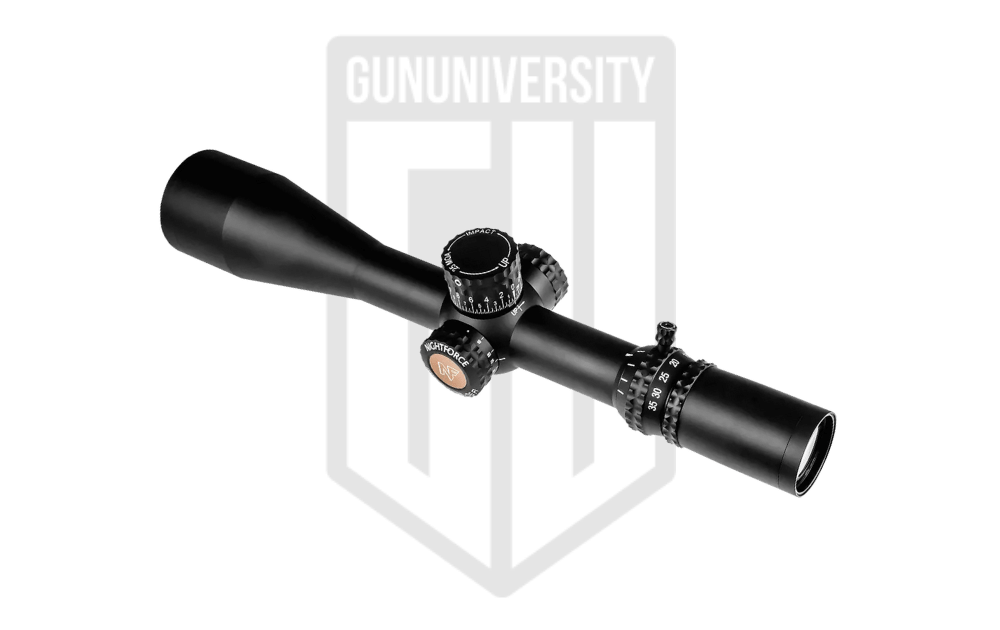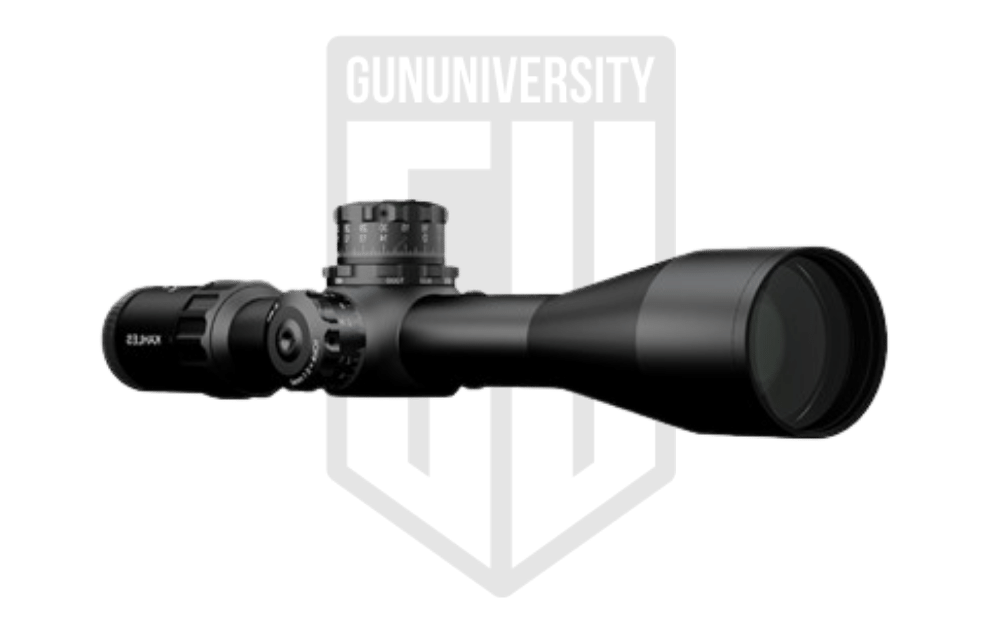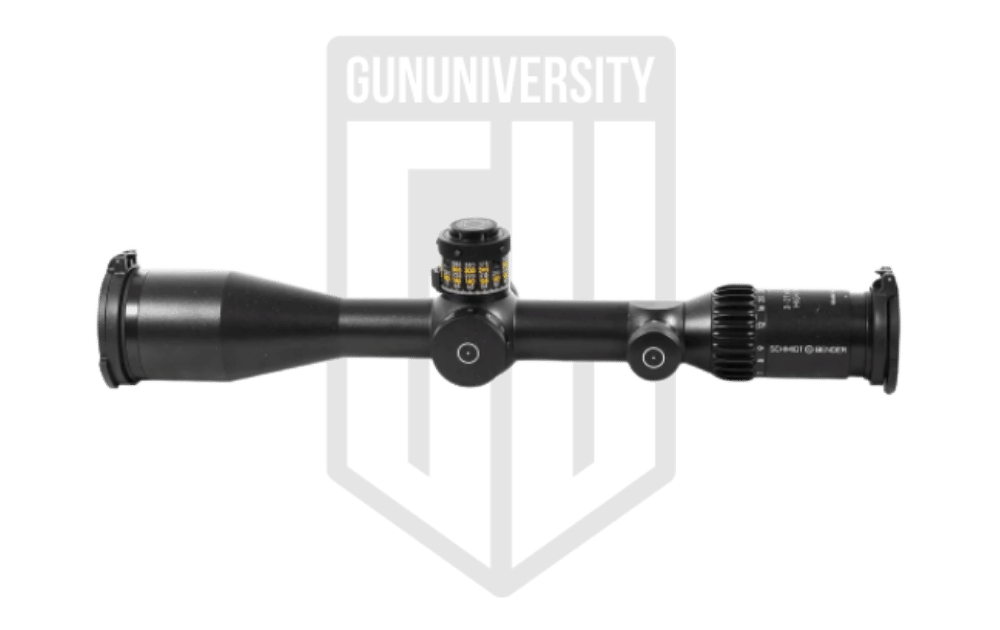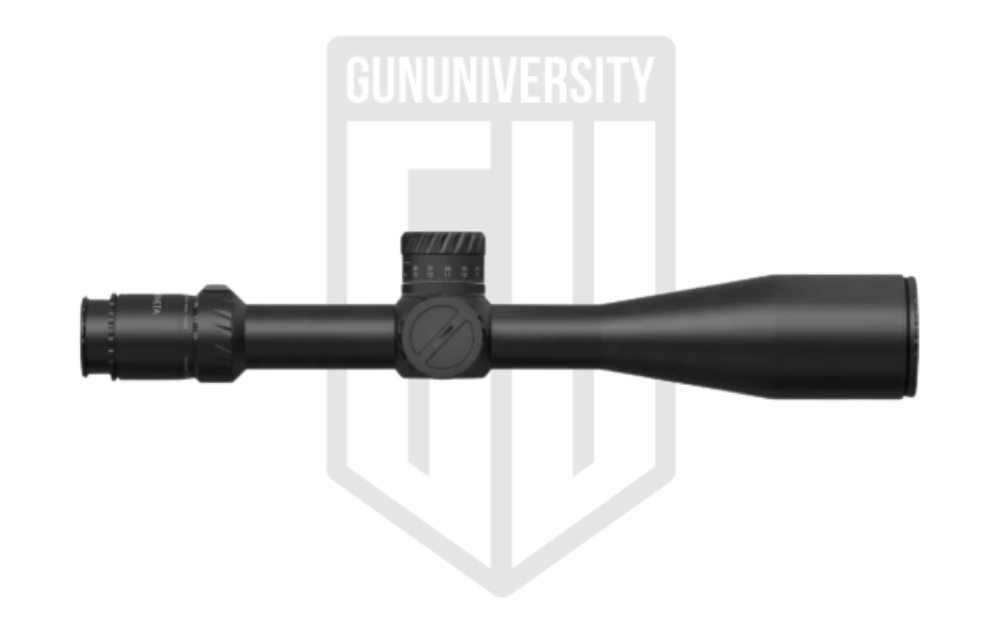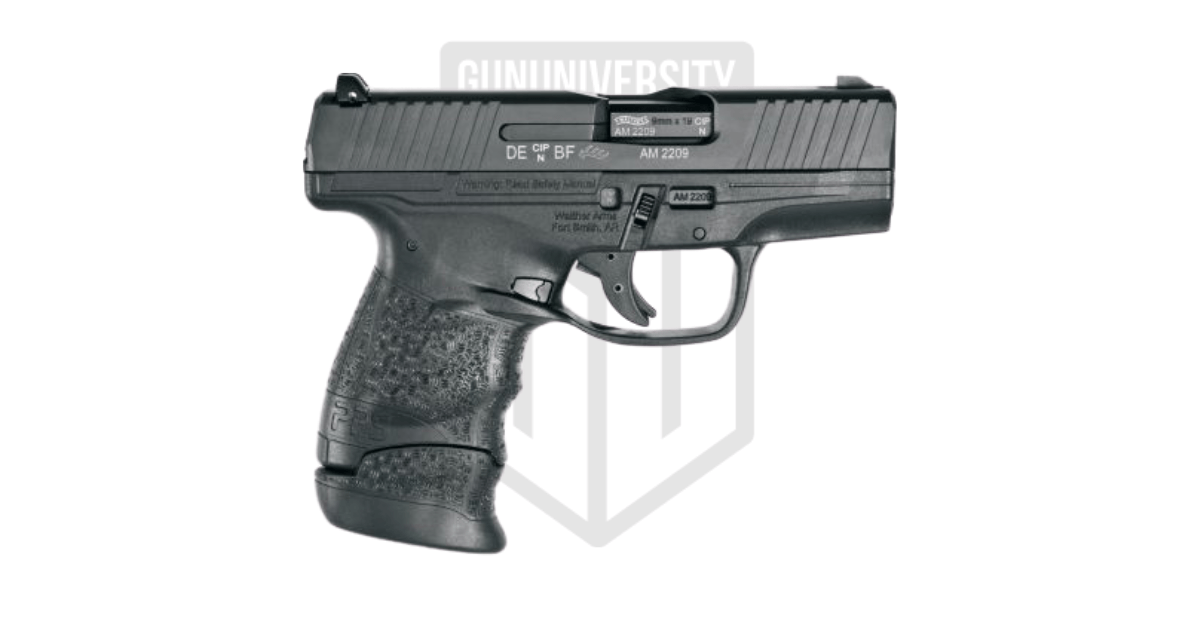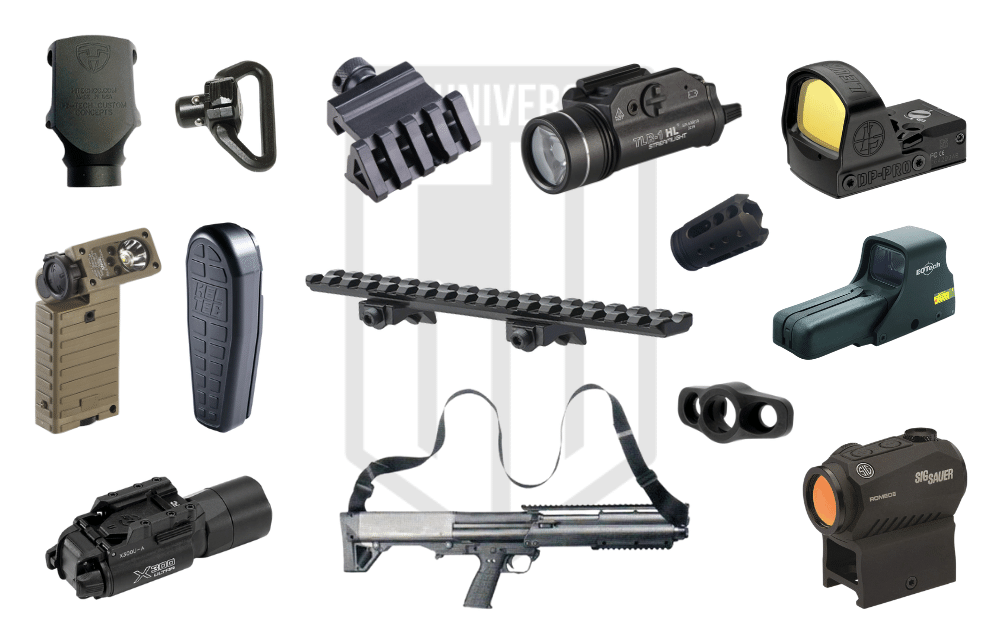Best Scopes for .338 Lapua Magnum
In the world of long range shooting, .338 Lapua is one of the biggest and baddest rifles you can find. Able to effectively punch big game at 1,000 yards or steel targets to 2,500 with comfort, this isn’t your average shooter.
To take advantage of the power and range that .338 Lapua offers, you need some big dog glass on it. Scopes that are durable enough to handle the massive recoil but also packed with the features and glass quality that will enable you to maximize your time at the range.
Best Scopes For .338 Lapua
- ZCO527 5-27×56
- Nightforce ATACR 7-35×56
- Kahles K525i 5-25×56
- Schmidt & Bender PM II High Power 3-27×56
- Vortex Razor HD II 4.5-27×56
- Tangent Theta 5-25×56 Professional
Best Scopes For .338 Lapua
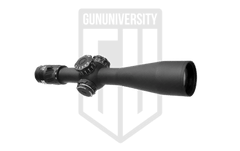 |
| Check Price | |
 |
| Check Price | |
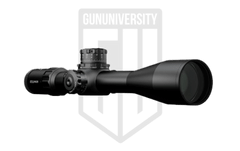 |
| Check Price | |
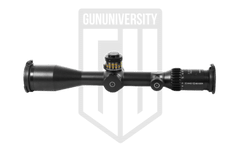 |
| Check Price | |
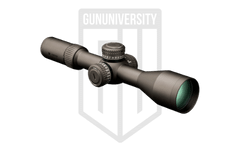 |
| Check Price | |
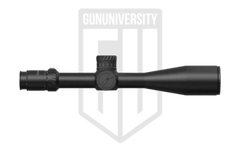 |
| Check Price |
Best .338 Lapua Scopes Review
Above we’ve listed our top 6 picks for the Best 338 Lapua Scopes. Now let’s have a look at their individual reviews, the pros and cons and price point of each of our options.
1. ZCO527 5-27×56
ZCO527 5-27×56
If you demand the best glass on the market, Zero Compromise lives up to their name.
- Reliability A+
- Glass A+
- Reticle A
- Ergonomics A
- Value A-
Our Grade
A
Reader’s Grade
TBD
Based on 0 Reviews
Your Grade
Do You Own This Optics? Leave A Review
Success Your Grade Has Been
Added To Our Reader’s Score
We use email to verify the accuracy of our reviews. We promise to never spam you.
ZCO527 Specs
- Magnification Range 5-27x
- Focal Plane FFP
- Weight 37.9 Oz
- Length 15.24in
- FoV @ 100y 21ft/4.5ft
- Illuminated Yes
- Total Elevation Adjustment 120 MOA
- Tube Size 36mm
- Zero Stop Yes
ZCO527 Review
ZCO is, in my opinion, simply the best you can get right now. It has a huge price tag, but being the king means you can rightfully charge an arm and a leg.
Explaining to someone who hasn’t looked through top-shelf glass how good the glass is isn’t possible, it is simply something you need to see for yourself.
ZCO isn’t built for a once-a-year hunting trip, this is built to be used at 1,000 yards regularly, 2,000 yards, even more. You can use it to go hunting, but you won’t unlock its full potential until you’re shooting at very long ranges.
The turrets are huge and easy to read, the reticles are built for speed and ease of information, the glass is simply perfect, they even manage to keep the weight down to a reasonable level.
And of course, the durability is outstanding. ZCO is still fairly new to the market, but I haven’t seen one go down at a match yet and so far, that is impressive.
The downside to all of this is that it is expensive. But when you’re thinking of putting this on a ELR caliber like .338 Lapua, you should also be expecting to spend some major money on some big player glass.
If you’re able, find a friend and take a look through theirs at 1,000 or more yards. Once you have — you’ll never be able to settle for less.
ZCO527 Pros and Cons
- Glass perfection
- Built like a tank
- Huge easy to use turrets
- The price
- Hard to find
ZCO527 Deals
-
$3,980.00
2. Nightforce ATACR 7-35×56
Nightforce ATACR 7-35×56
A top dog in NRL and PRS competitions for years and trusted by USSOCOM snipers, the ATACR is an ultra-durable and great scope that has won its reputation the hard way.
- Reliability A+
- Glass A
- Reticle A+
- Ergonomics A
- Value B-
Our Grade
A
Reader’s Grade
A-
Based on 6 Reviews
Your Grade
Do You Own This Accessory? Leave A Review
Success Your Grade Has Been
Added To Our Reader’s Score
We use email to verify the accuracy of our reviews. We promise to never spam you.
Nightforce 7-35×56 Specs
- Magnification Range 7-35x
- Focal Plane FFP
- Weight 39.3 Oz
- Length 16in
- FoV @ 100y 15ft/3.4ft
- Illuminated Yes
- Total Elevation Adjustment 100 MOA
- Tube Size 34mm
- Zero Stop Yes
Nightforce ATACR Review
A top dog in NRL and PRS competitions for years and trusted by USSOCOM snipers, the ATACR is an ultra-durable and great scope that has won its reputation the hard way.
Even now while it’s getting up there in age, it is still a totally respectable scope that will not let you down.
However, with new models being released every year by the competition — one wonders if Nightforce is resting on their laurels or if they have something up their sleeve soon to be released.
Either way — if you want a scope that can double as a reentry vehicle the ATACR is there for you. If it had legs you could ride it into battle. You simply can’t beat the durability of Nightforce.
When you’re looking at scopes in this price range there are some really heavy hitter contenders like TT, ZCO, and Kahles. While all of them are amazing, Nightforce is able to stand out by delivering an option that is slightly less expensive and still strongly competitive in features and glass quality.
Nightforce ATACR Pros and Cons
- Unbeaten durability
- Lots of reticle options
- Some of the best customer service you can find
- Getting long in the tooth
- Price has outpaced the glass quality
Nightforce ATACR Deals
-
$3,850.00
-
$3,850.00
-
$3,600.00
3. Kahles K525i 5-25×56
Kahles K525i 5-25×56
A complete redesign of how we think of turret adjustments, Kahles brings something totally new and totally different to the market.
- Reliability A+
- Glass A+
- Reticle A-
- Ergonomics A+
- Value A-
Our Grade
A
Reader’s Grade
B
Based on 1 Reviews
Your Grade
Do You Own This Optics? Leave A Review
Success Your Grade Has Been
Added To Our Reader’s Score
We use email to verify the accuracy of our reviews. We promise to never spam you.
Kahles K525i Specs
- Magnification Range 5-25x
- Focal Plane FFP
- Weight 34.2 Oz
- Length 14.8in
- FoV @ 100y 21.7ft/4.4ft
- Illuminated Yes
- Total Elevation Adjustment 104 MOA
- Tube Size 34mm
- Zero Stop Yes
Kahles K525i Review
Kahles gives you top-tier glass, amazing tracking, and all of the other features you would expect from a scope of its level — but that isn’t what really sets it apart from the other top-shelf offerings.
What really turns heads is how Kahles has totally redesigned how we approach the turret system.
With almost every other scope on the market right now the turrets are all laid out basically the same — elevation on top, windage on the right, with parallax and illumination on the left.
Kahles doesn’t follow this pattern. Instead, they put elevation on top with parallax on a second ring at the base of the elevation turret, windage on both the left and right side, and illumination on the left.
This makes your scope much more ambidextrous and easy to adjust from almost any position or angle.
If you’re left-handed, train how you fight or do competition that sometimes requires the use of your support side — this redesign makes life a lot easier.
While not required, this totally new take on things has a lot of benefits once you’re behind the scope and trying to do anything on a time limit.
It’s honestly surprising how much of a difference these changes make.
And on top of all of that, you’re getting some of the best glass on the market.
Kahles 5-25×56 Pros and Cons
- Totally new way of approaching turret design
- Ambi windage and parallax
- Breathtaking glass quality
- Price tag
Kahles K525i Deals
-
$3,449.00
-
$3,449.00
-
$3,399.00
4. S&B PM II High Power 3-27×56
S&B PM II High Power 3-27×56
Another legendary name that has won US Military contracts and champion competitions, getting a Schmidt & Bender is like getting a Rolls Royce of scopes.
- Reliability A+
- Glass A
- Reticle B+
- Ergonomics A+
- Value A-
Our Grade
A
Reader’s Grade
TBD
Based on 0 Reviews
Your Grade
Do You Own This Optics? Leave A Review
Success Your Grade Has Been
Added To Our Reader’s Score
We use email to verify the accuracy of our reviews. We promise to never spam you.
Schmidt & Bender Specs
- Magnification Range 3-27x
- Focal Plane FFP
- Weight 39.8 Oz
- Length 15.5in
- FoV @ 100y 42ft/4.5ft
- Illuminated Yes
- Total Elevation Adjustment 90 MOA
- Tube Size 34mm
- Zero Stop Yes
Schmidt & Bender 3-27×56 Review
A long time standard for USSOCOM and snipers for the Army, Navy, and Marine Corps — Schmidt & Bender have one of the deepest and most proven combat records on the market.
You simply can’t ignore those facts which makes for a very strong argument in their favor.
S&B has also never disappointed in the competition world and have brought home many, many big wins.
However, I wouldn’t call the glass perfect anymore. Due to those military contracts, S&B doesn’t innovate much and can’t make big changes often. While their scopes are always impressive and outstanding, they do feel a bit out of date when sitting next to something bleeding edge.
Even with that slightly outdated feeling, I still love getting behind one of these when I see one at the range. While not as perfect as some other options, the glass is still outstanding and provides a wonderful shooting experience at very long ranges.
I also find that while just a hair darker than the bleeding edge options, S&B is actually a bit more comfortable for me to sit behind for long periods of time. Maybe it’s a coating S&B uses, maybe it’s just a great balance of clarity without being too clear, but I always love it.
If you want one of the best or want to get in touch with your inner warfighter, S&B is a very strong option.
Schmidt & Bender 3-27×56 Pros and Cons
- Adopted by the US Military multiple times over
- Horus reticles
- Incredible glass quality
- Con: One of the oldest top-tier designs and shows its age
- Reticle selection is very dated
Schmidt & Bender 3-27×56 Deals
-
$6,399.99
5. Vortex Razor HD Gen II 4.5-27×56
Vortex Razor HD Gen II 4.5-27×56
A long-standing prince in the competition world, even with the next generation of Razor released the Gen II is still a worthy contender.
- Reliability A+
- Glass A
- Reticle A
- Ergonomics A
- Value A+
Our Grade
A
Reader’s Grade
A
Based on 4 Reviews
Your Grade
Do You Own This Optics? Leave A Review
Success Your Grade Has Been
Added To Our Reader’s Score
We use email to verify the accuracy of our reviews. We promise to never spam you.
Razor Gen II Specs
- Magnification Range 4.5-27x
- Focal Plane FFP
- Weight 48.5 Oz
- Length 14.4in
- FoV @ 100y 25.3ft/4.4ft
- Illuminated Yes
- Total Elevation Adjustment 113.5 MOA
- Tube Size 34mm
- Zero Stop Yes
Vortex Razor HD Gen II Review
On a list like this against boss-tier scopes like ZCO, Tangent Theta, and Kahles — the seemingly simple Razor Gen II might feel a little out of place — but it isn’t.
Even with its much lower price tag the Razor II still performs at a very high level and is simply an outstanding scope.
Durable, great glass and amazing tracking, Vortex makes a great product for their flagship optic.
However, this scope is a little outdated compared to the new competition on the market.
Irrespective of its competition, this is still a great scope. It might not be the newest and greatest, but compared to the price tag it is a very compelling option that demands to be considered.
Razor 4.5-27×56 Pros and Cons
- Perfect tracking
- Lifetime unlimited warranty
- Strong value ratio
- Glass is a little outdated
Razor 4.5-27×56 Deals
-
$2,799.00
-
$2,499.00
-
$2,799.99
6. Tangent Theta 5-25×56 Pro
Tangent Theta 5-25×56 Pro
Until recently the undisputed champion of scopes offering the absolute pinnacle of technology, Tangent Theta redefined the market.
- Reliability A+
- Glass A+
- Reticle A-
- Ergonomics A+
- Value A
Our Grade
A
Reader’s Grade
TBD
Based on 0 Reviews
Your Grade
Do You Own This Optics? Leave A Review
Success Your Grade Has Been
Added To Our Reader’s Score
We use email to verify the accuracy of our reviews. We promise to never spam you.
Tangent Theta 5-25×56 Specs
- Magnification Range 5-25x
- Focal Plane FFP
- Weight 40 Oz
- Length 16.7in
- FoV @ 100y 25ft/5.2ft
- Illuminated Yes
- Total Elevation Adjustment 103 MOA
- Tube Size 34mm
- Zero Stop Yes
Tangent Theta 5-25×56 Review
It wasn’t long ago that Tangent Theta was widely seen as the absolute best with no contenders in the running. And depending on who you ask, many outstanding shooters would still say so.
But with the newest offerings from ZCO and the like, Tangent Theta has some real competition.
Having been one of the best and doing so sooner than the others, the market has been reshaped and redefined by Tangent Theta and has pushed what our expectations should be to new heights.
They’ve done this by having some of the best glass ever seen, amazing construction, incredible durability, and by helping shooters win competition after competition.
The downside right now is the reticles. If you like Horus reticles, then you’re good to go. But the other reticles offered are a bit simplistic for most of us and simply aren’t as good as what other brands have.
They are entirely usable and are good, but they could be a lot better. Depending on your style and what you like you may or may not agree.
In either case — Tangent Theta won’t let you down. Even with a sub-par reticle, the construction and glass more than make up for it.
Tangent Theta 5-25×56 Pros and Cons
- Impeccable glass
- Near perfection in every way
- leader in the industry
- Limited reticle options
- Scope markings are a little small
Tangent Theta 5-25×56 Deals
-
$5,092.00
The Best .338 Lapua Scopes – Buyer’s Guide
.338 Lapua Magnum is a big boy cartridge that leaves nothing on the table. Everyone knows when someone is shooting this beast because you can feel it across the firing line.
This isn’t designed for your average whitetail hunt or for plinking at 100 yards.
To really get the most out of this monster you need to be shooting big long range or even extreme long range. I’m talking 500 yards at a minimum and 2,500 yards being still well within your grasp.
While I wouldn’t recommend trying due to ethical reasons, .338 Lapua is one of the few cartridges that can honestly be considered effective on very large game like elk or moose at 1,000 yards.
To take advantage and really unlock everything this cartridge has to offer — you need a great scope. Nothing average will do. Only the best.
And frankly, if you’re able to afford the cost to feed the beast, you probably have the budget to properly outfit it.
Why These Exact Scopes For .338 Lapua?
As we just discussed, .338 Lapua is expensive and is designed for big things. Be it shooting at 2,500 yards on steel or harvesting game at over 500 yards–you need major league glass to do any of these things effectively.
And due to the incredibly high cost of rifles and ammo in this cartridge, if you can afford to own it and feed it — you should be able to afford giving it the glass it deserves. If not… maybe consider something in .300 Win Mag instead.
Every scope on our list is one of the best. All of them are top shelf, these are the Ferrari, Rolls Royce, McLaren, Koenigsegg, and Lamborghini of rifle scopes.
All of them have proven records in the competition world across multiple disciplines and a few have hard-won reputations proven in combat.
Choosing any of these scopes will let you get the absolute best from your rifle and will allow you to reach out as far as possible.
Try Before You Buy
Something to consider when looking at scopes of this caliber is that because they are the best the differences between each are very small. At this price range, diminishing returns have kicked in hard and you’re spending big money to get small improvements because that is what master craftsmanship requires.
With glass this good — what is “best” will largely depend on you. Every shooter is different and this is even more impactful when we’re talking about our eyes. We are simply, biologically, different.
The best glass to my eyes might not be the best to yours. This is entirely normal and even expected.
Before you lay out $3,000 to $5,000 on a new scope, try to give them a proper look and test first. I don’t mean hold them up in Bass Pro and look across the store at a clock on the wall, I mean get behind them on the range and take some shots at a target 500, 800, 1,000 yards away.
This is really the only way that you will be able to really find out what matters most to you and what looks best to you.
Not sure how or where to do this? Look into an advanced long range class or major PRS competition near you. You’re bound to find these scopes on the line and highly experienced people that can offer advice.
What Specs Matter Most
It can get a little overwhelming when it comes to differences in brands and specs. Below is an outline of some specifications which I feel matters most as you approach finding a scope that suits your needs.
Magnification Range: This is exactly what it sounds like it is, how much the scope magnifies the target. You’ll see it written as “5-25×56” or some other combination of numbers with that format. The “5-25x” part is the minimum and maximum magnification.
At the lowest, “5-25x” will make your target appear 5 times as close. At the max, it will appear 25 times closer.
Generally speaking, there is no such thing as too little magnification. Dialing down on your scope is great so you can see more area. This is useful for finding targets, reading environmentals like wind, or transmitting more light to your eyes for shooting at dusk.
There is such a thing as too much magnification. Your eye box (where your eyes can be in relation to the scope) gets very small, mirage becomes a real problem at long range, and finding or tracking targets can be much harder.
There are scopes out there in the 40x or more range but those are generally for dedicated ELR rifles or known ranges like F-Class.
.338 Lapua can be used for Extreme Long Range and so a scope with 35x-40x might be useful to you, but those are pretty niche cases and really are better with calibers like 416 Barrett or 375 Cheytac.
Broadly speaking, for a .338 Lapua rifle shooting around 500-2,500 yards I would tend to stick to a maximum of about 30x magnification.
FFP or SFP: All of the scopes on this list are first focal plane, but let’s talk about what that means also.
Second Focal Plane and First Focal Plane is basically where in the scope the reticle sits.
Second Focal Plane (SFP) means the reticle will never change size as viewed by the shooter when you adjust the magnification. That reticle will be the size that it is at 5x or 9x or 25x, always.
The good news is that this gives you a consistent reticle to work with and lines that won’t vanish on you. The bad news is that any MOA or MIL or BDC markings will only be accurate at the calibered magnification (normally the max magnification but check your scope manual to be sure).
If your scope has 1 MOA hash marks, those marks will only actually be 1 MOA at the calibrated magnification. Anything else and they won’t actually be 1 MOA.
First Focal Plane (FFP) is basically the exact opposite. The reticle will change size based on your magnification, but the markings will always be accurate. A 1 MOA-sized mark in an FFP scope is 1 MOA at 5x, 10x, or any magnification you have it set at.
However, at low magnification, your reticle can get very small and hard or impossible to use. This kind of depends on the scope and reticle though so there is no hard and firm rule.
SFP scopes are great for hunting and shorter ranges where you might be dialed way down and still need to take a shot.
FFP scopes are built for long ranges where you’re expended to be at least using a mid-range setting so the reticle will be big enough to use effectively.
Since .338 Lapua is a dedicated long range cartridge, SFP isn’t super useful and FFP has a lot of advantages.
To learn more about FFP vs SFP, click here.
Weight: Basically any .338 Lapua rifle is going to be a heavy gun so the weight of your scope likely won’t be a huge issue, but still, maybe you’re the kind of madman that wants to mountain hunt with your .338 Lapua. Live your dreams I say.
Weight is weight, heavy scopes are normally more durable, have more features, and better glass. The lighter a scope is, the more it has to sacrifice in one area or another.
Light scopes are great for hunting or anything where you’re hiking the rifle in and out of an area, but heavy scopes have more… everything that a scope needs.
All of the scopes on this list are on the heavy side since they are all super premium scopes with features and glass to match.
Field of View: The Field of View is how far side to side you can see. Pretty straightforward, right?
Generally, I don’t really take much note of the listed FoV on a scope because generally, they are going to be basically the same plus or minus a tiny amount when you look at scopes with the same tube size, magnification, and objective lens.
Some scopes stand out in this regard, but they are fairly rare.
Since I can always dial down a bit if I need to see more, I’m not too worried about getting a scope with the best FoV.
But more FoV never hurt anyone either.
Illumination: It isn’t very common these days for a good scope to not have illumination, but you see it omitted on some of the more budget-friendly scopes.
The scopes on this list are definitely not budget-friendly and all have illumination, some in multiple colors.
Illumination means the reticle itself will light up. How much of the reticle depends on the scope. Sometimes it’s just the middle area, sometimes it’s the entire reticle.
Red is the most common color but more and more scopes are coming in either red or green or sometimes even both.
Battery life is universally not great. While modern red dots might last 50,000-100,000 hours this is accomplished because of coatings on the glass making the glass darker. That would be madness to put on a long range precision scope, so it takes more energy to make the color light up.
Battery life varies widely so keep an extra battery handy and turn it off when you’re done.
Why do you care? Because illumination is really, really handy sometimes.
Maybe you’re shooting at something furry that is trying to blend into a tree line on the side of a hill in the shade or maybe you’re shooting gray steel set on some rocks at 2,000 yards — either way your black reticle can get really hard to define and pick out against a target and background like that.
Turning your reticle red or green gives you some very sharp contrast that will help a lot in taking a good shot.
Total Elevation Adjustment: Total elevation adjustment is how far top to bottom your scope can adjust. Be it in MOA or MRAD, this is how much you have to work with.
More is always better and scopes with good turret design and large main tubes have a lot more adjustment than smaller scopes.
How much do you need? It depends on how far you’re shooting and what you’re shooting. .338 Lapua with a 100 yard zero only needs 25.5 MOA or 7.5 Mils to reach 1,000 yards. Even 1,500 yards is only 50 MOA or 15 Mils, roughly.
Any of the scopes on our list will have that and more. Plus, if you really need a boost you can use angled scope mounts to achieve this.
However, the total adjustment is a little misleading. Since that is the total amount top to bottom — you’re not really able to access all of it. Give or take a little, your reticle is going to be zeroed about in the middle of that range.
Since you’re already in the middle, you only have half of the total to use when dialing up for a long shot.
And on top of that, the bottom and top 10% or so can get a little iffy due to the mechanics of how a scope is built and works.
A scope with 100 MOA of total adjustment has about 45 MOA of truly useful and reliable adjustment.
The scopes on our list have at least 90 MOA so no matter what you’ll be good out to 1,000 yards with no holdovers, but if you’re looking to hit targets at ELR ranges like 1,500-2,500 you might want to keep that in mind when picking a scope.
You’ll also want to get a scope mount or rings that have some built-in MOA. These are basically canted very slightly to allow you to use more of the adjustment in the scope. They come in a lot of flavors from 20 MOA to 60 MOA.
I like to use 20 MOA on all of my centerfire long range rifles and 30 or 40 MOA on my long range .22 LR rifles.
For .338 Lapua a scope with 100 MOA adjustment on a 20 MOA base/rings/mount will give you about 60-65 MOA of real adjustment giving you a range of about 1,700 yards without having to holdover in your reticle.
And while we’re on the topic, if you’re not sure what they mean — take a look at our articles on MOA and MRAD !
Zero Stops: After you zero a scope, a zero stop lets you lock that zero in so that you can quickly return to it later after you dialed for a long shot.
This is a firm wall that will stop you from dialing down too far and missing your zero. Most quality scopes have a zero stop these days and they are incredibly useful to have.
You Bought A Scope, Now What?
After the pain of spending all that money, it’s time for the fun part! Getting your scope mounted and zeroed is a fairly easy process and one that every shooter really needs to know how to do themselves.
However, if you really don’t want to then you can normally pay a gunsmith or some random guy at your local range to do it for you.
I strongly recommend learning it yourself.
Mounting a scope requires a torque driver, a level, and a few minutes of time. This topic should be an entire article on its own, so I’ll let a true expert give you the details. Take a look at our How To Mount A Scope: 7 Steps To Installing A Riflescope The Right Way!
Zeroing a scope is the process of getting the point of aim (POA) to match your bullet’s point of impact (POI) at a set range (100 yards is pretty standard for long rifles).
My advice is always to start fairly close and work your way out. Getting on paper at 25 or 50 yards and then setting your target at 100 can avoid a lot of frustration.
Take it from the expert on How To Adjust A Rifle Scope and How To Sight In A Rifle Scope: Zeroing Made Easy!
Final Advice
We’ve covered a ton of ground in this article and it’s a lot to take in. From the best scopes to zeroing your scope, you basically have all of the information you could use for getting your .338 Lapua in the field and taking shots!
One final thought I want to leave you with is that while all of these scopes are expensive, they are all worth it — if you’re willing and able to take advantage of .338 Lapua.
A lot of .338 Lapua owners and shooters get into it because they think it’s cool or it’s a name they’ve heard before, the number of secondhand almost unfired .338 Lapua rifles I see at my gun store is shocking.
This is a cartridge that really needs a lot of distance to shine. It’s expensive, recoils like a mule, and puts a lot of wear on the shooter.
If you have the range to exploit a huge caliber like .338 Lapua, it can be a lot of fun and very rewarding to shoot.
But to do that you need a great scope. That’s why every scope on this list is top tier and nothing is budget-friendly. I want you to have the best so you can succeed when it comes to taking that 2,500-yard shot with your .338 Lapua.
Recent Posts
December 15, 2025
December 15, 2025
December 12, 2025
December 12, 2025


